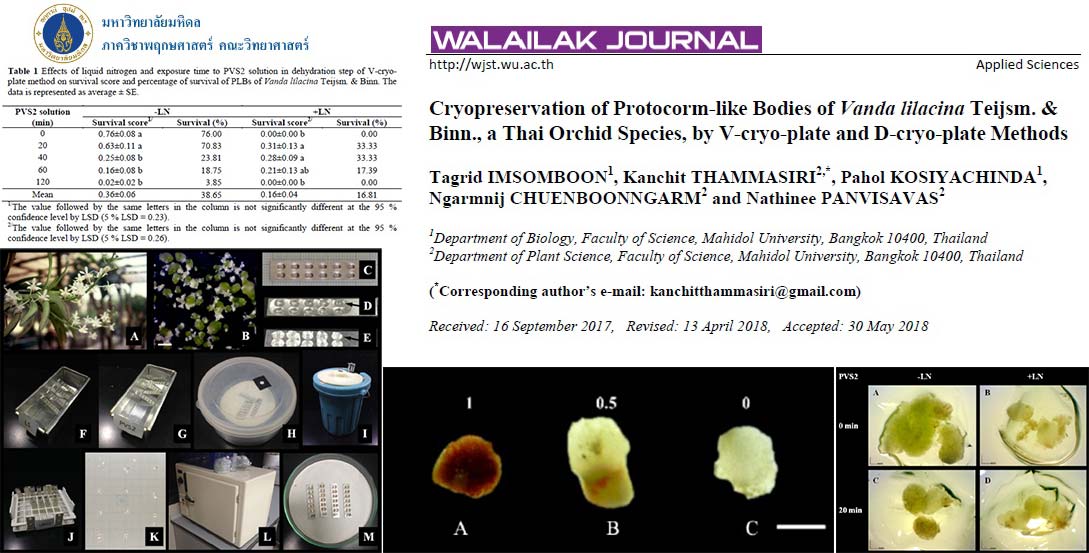Tagrid IMSOMBOON1, Kanchit THAMMASIRI2,*, Pahol KOSIYACHINDA1,
Ngarmnij CHUENBOONNGARM2 and Nathinee PANVISAVAS2
1Department of Biology, Faculty of Science, Mahidol University, Bangkok 10400, Thailand
2Department of Plant Science, Faculty of Science, Mahidol University, Bangkok 10400, Thailand
Abstract
Protocorm-like bodies (PLBs) of Vanda lilacina Teijsm. & Binn. were used to study two new cryopreservation methods, the V-cryo-plate and D-cryo-plate methods, for survival score and percentage of survival. PLBs were dehydrated with PVS2 solution (0, 20, 40, 60, and 120 min) and silica gel (0, 0.5, 1, 1.5, 2, 2.5, and 3 h) for the V-cryo-plate and D-cryo-plate methods, respectively. The results showed that the V-cryo-plate method, dehydration with PVS2 solution for 20 min, was a suitable method. It gave a survival score of 0.31, higher than control (+LN; 0 min) and gave a percentage of survival of 33.33 %. For the D-cryo-plate method, the suitable method for cryopreserved PLBs of V. lilacina was dehydration with silica gel for 1 h. It gave the highest survival score of 0.78 and percentage of survival was up to 83.78 %. Then, an unpaired t-test was used to compare data of survival scores of cryopreserved V. lilacina PLBs between the V-cryo-plate and D-cryo-plate methods. The best suitable cryopreservation method of V. lilacina PLBs is the D-cryo-plate method using silica gel for 1 h in dehydration step.
Keywords: Plant cryopreservation, Cryo-plate, Dehydration, Vitrification, PVS2, Orchidaceae
Read more: http://wjst.wu.ac.th/index.php/wjst/article/view/4429

